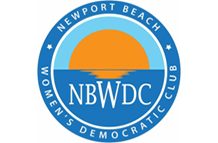Caring for 2,500 juvenile white sea bass is no easy task, but it’s worth it for the sake of the species to the many volunteers at the Balboa Angling Club’s Pacific Fisheries Enhancement Program.
“It’s about giving back to marine life,” to the ocean, said volunteer and grow-out pen facilitator for the club, John Zartler. “It’s not just about the fish, it’s the whole ecosystem.”
The project is part of the Hubbs-SeaWorld Research Institute White Sea Bass Stock Enhancement Program. The fish are hatched at the Hubbs institute in Carlsbad, raised in grow-out pens in Newport Beach harbor (and 12 other locations up and down the California coast) and then released into the wild after they have grown to about 12 inches.
The idea behind the program is to help replenish the white sea bass stock.
The White Sea Bass Stock Enhancement Program started in 1983 after the Ocean Resources Enhancement and Hatchery Program legislation passed, said HSWRI research scientist, Mike Shane. The Hubbs program released their first batch of fish in 1986.
The program was prompted by the declining number of catches of white sea bass, Shane said. In the 1950s, over 50,000 white sea bass were caught annually by recreational fishermen. By 1978, that number had decreased to less than 500 a year. Similar trends were reported by commercial fishing, Shane said.
“The white bass fishery pretty much died out in the mid 50s,” said Jock Albright, former president of the Balboa Angling Club.

Milton C. Shedd, one of the visionary founders of SeaWorld in San Diego, met with world-renowned marine biologist Dr. Carl L. Hubbs.
“They had a clear vision of a unique scientific research organization that would be independent, highly productive, creative, technology-driven and results-oriented,” according to the institute’s website.
Shedd came up with the idea to direct his biologists toward the possibility of breeding white sea bass, Albright said.
“It was a pioneering idea,” he said.
Albright was approached by Hubbs about starting a volunteer program to raise and release white sea bass in 1992.
Over 125,000 white sea bass have been released since the club’s first batch of 2,400 in 1993. More than 1.8 million white sea bass have been released from all 13 facilities combined since the program’s inception in 1983.
“It’s been a huge success,” Albright said. “There was definitely learning curve,”
The pens include four raceways, rectangular fiberglass enclosures. When the program first came to Newport they used nets, said longtime volunteer Ed Dillon, which were heavy, difficult to work with and harder to keep clean.
They’ve tested numerous types of food through trial and error, Dillon added, as well as changing the method of transporting the fish to from shore to the pens.
They arrive in Newport about three to three and half inches in the middle of May. By the time they leave in the fall they should be 12 inches, Zartler said.
The Balboa club raises and releases about 2,500 to 5,000 white sea bass every year, Dillon said.
“It varies from year to year,” Dillon said.
A volunteer needs to check the pens every day, to check the fish health, feed amounts, cleaning duties, etc.
“Somebody has to be out here every day,” Zartler said. “If something happens, somebody has to blow the whistle.”
Something like the virus that just hit the school a few weeks ago, killing only about 15 or 20, Zartler said, which isn’t that bad.
It could have been a lot worse, Dillon said. Other places lost 400 to 500 fish to the same virus, Zartler added.
“The thing (that helped us) is, we caught it really quick,” Dillon said.
Disease often hits the fish when there is a dramatic change in temperature. The water temperature getting colder is fine, Dillon said, it’s when it suddenly increases does it become dangerous.
Of course, the warmer the water, the faster the fish grow, and the growth on the sides of the pens as well.

The tides help clean out the pens but volunteers still need to scrape the side of the naturally occurring growth that builds up.
The tide also allows the extra food to drift out of the pen, so directly on the other side of the gate is crowded with local wild fish.
“So we have a huge local population of smelt,” Zartler said.
A few of the local fish even get through the gates when they’re small and get fed, raised and released with the others.
There was concern at one time that it would attract sea lions or birds, Albright said, but it hasn’t really been a problem. At one time they had an open dock that sea lions would lay on but it has since been fenced in.
“I don’t think sea lions or birds have been much of an issue at all,” he said.
Overall, the program has been very successful.
“We’re just now beginning to see that (the results),” of the program, Zartler said. “We’ve been seeing a lot more fish being caught.”
The number of white sea bass caught annually has gone up to about 5,000, he said.
Over 1,800 white sea bass from the program have been recovered, including one from Newport Beach that traveled all the way to the Cortez Bank off of San Diego and a Dana Point release that swam north to Monterey.
“So they do travel,” Dillon said.
They have even recovered some that were hatched more than a decade prior.
“It’s an awful big pond out there,” Shane said. “To be getting fish back over 13 years later (is pretty great).”
The white sea bass count is drastically higher than what has been in previous years, Zartler said.
“There has been a resurgence,” in the population, Shane said. “The fishery looks like it’s recovering.”
The increase is thanks to a number of reasons, Shane said. The program is just one of many tools, he added. Stricter regulations, replenishment programs, fishing limits are just a few of the tools used to manage the fishery. During the March 15 to May 15 spawning period, for example, the limit is one per angler.

Hubbs-SeaWorld is taking a responsible approach to the program, Shane said, every fish has a coded wire tag unique to its batch, the genetics of the fish are researched, and information is gathered and analyzed.
The minuscule tag is attached to the head of every fish before arriving in the Balboa pens. Each fish has their own unique code embedded in the tag so that when they’re caught, however many years down the road, the fisherman can turn in the fish head and it can be tracked back to a specific grow-out pen.
“These fish, to be legal size, will take six to seven years,” Dillon said. So they will likely start seeing more from Newport Beach being caught in the upcoming years.
The 40 and 50 pound fish being caught now were basically the first generation saved from the gill nets, Dillon said.
Shane said they also encourage fishermen to turn in their white sea bass heads to any of the drop-off locations listed on the Hubbs-SeaWorld Research Institute website.
“We just keep pumping out fish,” Albright said.
The grow-out pens like Newport Beach’s help the program get more fish out the door at a lower cost, Shane said. It’s uncommon for replenishment programs to be releasing white sea bass at such large sizes, he added, most are about half the size as the fish released from Newport, which is possible because of the number of volunteers and pens they have. Being able to release them when they’re bigger helps their chances of surviving in the wild.
“I think it’s a great idea to be able to put fish back in the ocean,” Albright said. “Rather than harvesting them all the time.”
The Hubbs-SeaWorld Research Institute’s mission “to return to the sea some measure of the benefits derived from it” fits accordingly with the white sea bass replenishment program.
“It’s nice to come out here… Give back to the community,” Zartler said. “When you think about fishing, everything is take, take, take, not a whole lot of giving back.”
Volunteers are always welcomed and do not need to be a member of the Balboa Angling Club, Albright said, although a few basic skills may be required. Contact the club at 949-673-6316 or www.balboaanglingclub.org for more information. Visit www.hswri.org for more information about the Hubbs-SeaWorld Research Institute and the replenishment program, as well as a list of locations to drop off white sea bass heads.
All four men agreed that they hope the program gives back enough to help the population thrive again.
“We are (basically) trying to get the percentages [of white sea bass caught annually] to go up,” Shane said. “We [aim to] bring it back to the historic fishery that it once was.”





thanks sara. great thing going on here at the Balboa Angling Club.
Great stuff. In the past week I must have caught at least 6 baby WSB in Newport harbor. This species is flourishing due to efforts of John, Jock, and others in this hatchery program. Recreational fisherman are invested in the health of local fish populations, too bad the political MLPA decided to ban us from fishing dozens of miles of our coast despite the wonderful conservation efforts we have been implementing and practicing for years.